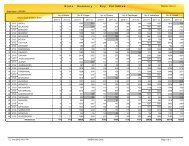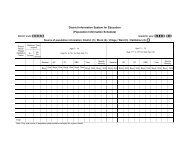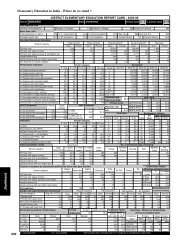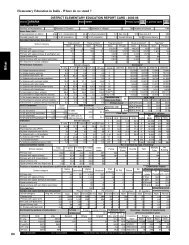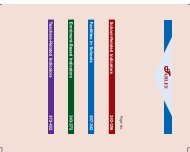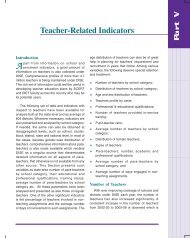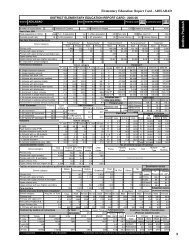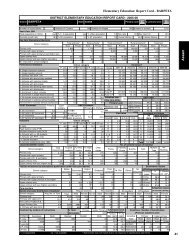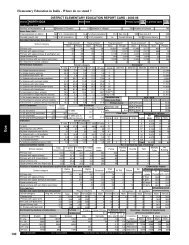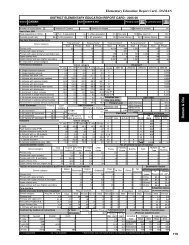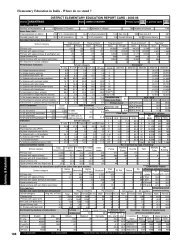Student Flow at Primary Level - DISE
Student Flow at Primary Level - DISE
Student Flow at Primary Level - DISE
- No tags were found...
You also want an ePaper? Increase the reach of your titles
YUMPU automatically turns print PDFs into web optimized ePapers that Google loves.
34 <strong>Student</strong> <strong>Flow</strong> <strong>at</strong> <strong>Primary</strong> <strong>Level</strong>Pradesh and 97.34 percent in Uttar Pradesh. In 2005-06, as many as11,24,033 schools reported d<strong>at</strong>a under <strong>DISE</strong> against 10,37,813 schools inthe previous year which indic<strong>at</strong>es an increase of 86,220 schools, or 8.31percent over of the total schools covered during the previous year 2004-05. Thus, of the 1,23,013 uncommon schools observed during 2005-06, asmany as 1,06,341 schools (70.09 percent) are the new schools added during2005-06. Hence, as it seems, only 36,793 schools are uncommon in boththe years which is 3.27 percent of the total schools th<strong>at</strong> impart elementaryeduc<strong>at</strong>ion in the country. Efforts are being made to maintain consistencyin coverage so th<strong>at</strong> all the schools covered in a year are also covered thefollowing year. St<strong>at</strong>es are advised to upd<strong>at</strong>e and prepare complete list ofall the recognised schools <strong>at</strong> disaggreg<strong>at</strong>ed levels by management, suchas cluster, block, district and st<strong>at</strong>e levels. In addition, CRC Coordin<strong>at</strong>orshave also been made accountable to ensure complete coverage as well ascheck the consistency of d<strong>at</strong>a in the filled-in form<strong>at</strong>s falling under his/her jurisdiction.Analysis of <strong>Flow</strong> R<strong>at</strong>esThe st<strong>at</strong>e-specific promotion, repetition and drop-out r<strong>at</strong>es for cohorts2003-04 and 2004-05 have been presented in Tables 13 to 21.Promotion R<strong>at</strong>eThe grade-specific as well as average of Grades I –V promotion, repetitionand drop-out r<strong>at</strong>es have been computed separ<strong>at</strong>ely for boys, girls as alsothe total enrolment and the same are presented in Tables 13 to 21. It isobserved th<strong>at</strong> average promotion r<strong>at</strong>e in Grades I-V for cohort 2004-05has improved to 83.76 percent from its previous level of 81.53 percent in2003-04; the corresponding figures being 83.57 percent for boys, and83.96 percent for girls for cohort 2004-05. Barring Delhi, no significantdifference is noticed in average promotion r<strong>at</strong>e for boys and girls. It mayalso be noted th<strong>at</strong> as many as 11 st<strong>at</strong>es have reported a lower promotionr<strong>at</strong>e than the average of all districts together (83.76 percent). ArunachalPradesh (68.35 percent), Bihar (75.10 percent), Chh<strong>at</strong>tisgarh (78.20percent), Jharkhand (77.21 percent) and Rajasthan (74.27 percent) aresuch st<strong>at</strong>es. On the other hand, Meghalaya (69.17 percent), Sikkim (72.71percent) and Tripura (80.70 percent) also reported lower averagepromotion r<strong>at</strong>es; all of these st<strong>at</strong>es are from the north-eastern part ofthe country. In a few st<strong>at</strong>es, such as Kerala (95.66 percent), HimachalPradesh (92.82 percent) and Tamil Nadu (96.40 percent) almost all thechildren in primary Grades I-V were promoted to next Grade. Consequently




